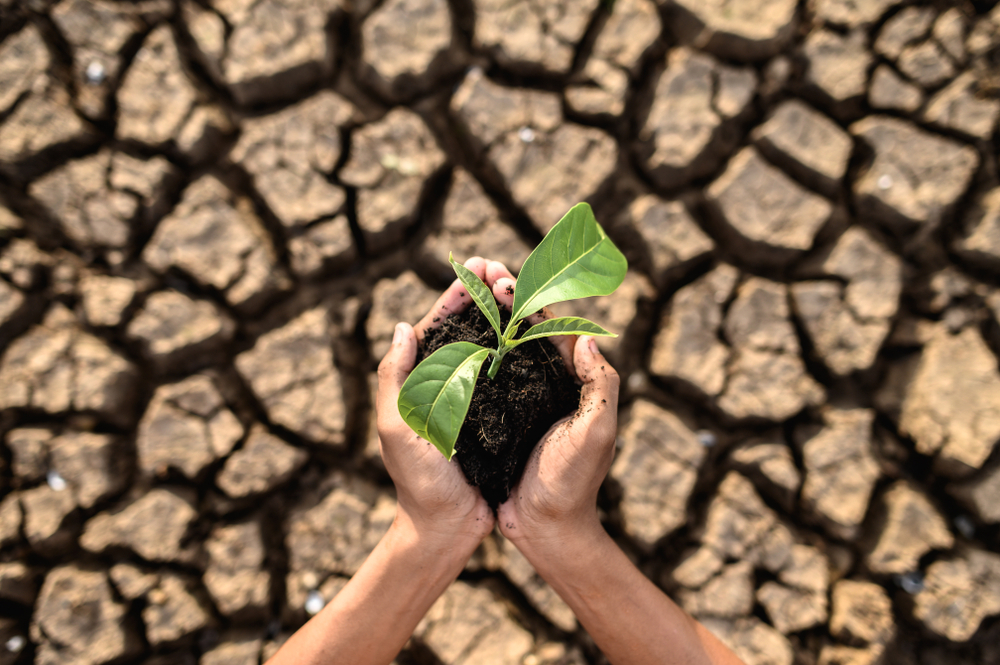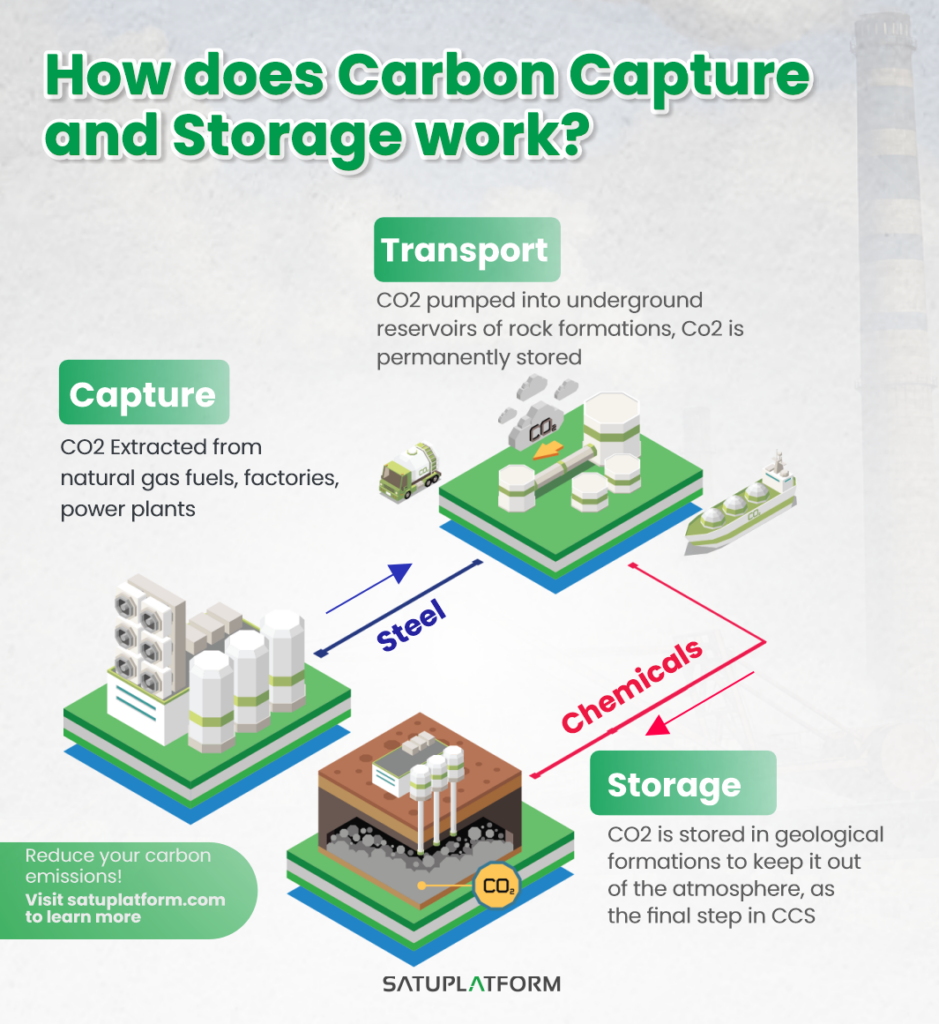Climate change continues to be such a pressing global issue. The effects of climate change are inevitable for every country. This includes the phenomenon of water scarcity, increasing risk of agricultural drought, massive heat waves, and so on. There have been several initiatives to tackle climate change, such as the Paris Agreement and the Agenda of Sustainable Development Goals (SDGs), which also concern zero-carbon initiatives. The United Nations Economic Commission for Europe (UNECE), as a multilateral platform that facilitates greater economic integration and promotes sustainable development, has set the target for its member countries to deploy zero-carbon and negative-carbon technologies to capture 90Gt of carbon (CO2) by 2050.

Under this condition, the technology to mitigate climate change requires an effective approach to be implemented. One approach that is now widely known to mitigate this issue is the utilization of Carbon Capture and Storage.
Table of Contents
ToggleWhat Is CCS?
Carbon capture and storage (CCS), also known as carbon capture, utilization, and storage (CCUS), refers to a suite of technologies designed to reduce carbon dioxide (CO2) emissions from industrial processes. This technology involves capturing CO2 emissions produced from burning fossil fuels or other industrial processes, transporting it to a storage site, and securely storing it underground or using it for other purposes.
How Carbon Capture and Storage Works for Tackling the Climate Change
The carbon capture and storage (CCS) works through several process in order to tackling the climate change, such as:

-
- Capture
This process involves capturing carbon dioxide (CO2) emissions from various sources such as power plants, industrial facilities, or even directly from the atmosphere. The methods to capture emissions can be made through different methods.
The first method is pre-combustion capture, which occurs before the fuel is burned. In this process the carbon dioxide is separated from the fuel during the process of converting fossil fuels into a gas that can be burned.
The second method is post-combustion capture, which happens after the fuel has been burned. In this process, the carbon dioxide is separated from the flue gases emitted.
The third method is oxy-fuel combustion, it involves burning fossil fuels in oxygen instead of air, resulting in a flue gas that is mostly CO2 and water vapor, making it easier to capture the CO2.
-
- Transportation
After being captured, CO2 is transported via pipelines, ships, or trucks to suitable storage sites. Transportation methods vary depending on the distance to the storage site and the volume of CO2 to be transported.
-
- Storage
In this method, CO2 is injected deep underground into geological formations for long-term storage. Suitable storage sites include depleted oil and gas reservoirs, deep saline aquifers, and unmineable coal seams. The injected CO2 is trapped underground by impermeable rock formations and held securely over geological timescales.
Overall, the CSS gives benefits in many ways, such as reducing emissions, carbon neutrality, bridge to a Low-Carbon Future, potential for carbon removal, and other ways that contribute to reducing greenhouse gas emissions and mitigating climate change.
Indonesia, with its capacity to store CO2 estimated between 400 to 600 gigatons in exhausted reservoirs and saline aquifers, is leading the way into the era of environmentally-friendly industry. This potential enables the country to store CO2 emissions for about 322 to 482 years, with an anticipated peak emission of 1.2 gigatons of CO2 equivalent by 2030.
Your company or organization can surely play a role in creating a better environmental future. It is possible to start by simulating the emissions measurements that your company produces by utilizing the all-in-one platform from Satuplatform, get a FREE DEMO here!
Similar Article
Bagaimana Peran Perang dan Militer sebagai Kontributor Jejak Karbon Global
Konflik dan perang menciptakan kontributor jejak karbon baru dengan dampak signifikan dan sayangnya, sebagian besar tidak dihitung. Emisi ini jarang…
Why Product Lifespan Is the Next Frontier for Sustainable Business
Embracing product longevity and extending product lifespan emerges as a current and indispensable strategic priority for cultivating sustainable business growth…
Green Building sebagai Cara Mengurangi Jejak Karbon, Ini yang Perlu Dilakukan!
Di tengah isu perubahan iklim yang semakin mendesak, bisnis dan masyarakat global mulai sadar pentingnya pembangunan yang lebih ramah lingkungan.…
Unveiling the Environmental Impact of Children’s Toys Industry
The global toy industry plays a significant role in early childhood development, creativity, and education. Toys bring joy, imagination, and…
ESG as Sustainability Initiatives for Modern Industry
In today’s world, sustainability is no longer just a “nice-to-have”, but it’s a must. With rising concerns about climate change,…
ESG Strategies for Business Growth in Developing Countries
In today’s fast-changing world, businesses are no longer only measured by profits. Companies are now expected to be responsible for…
Similar Article
Bagaimana Peran Perang dan Militer sebagai Kontributor Jejak Karbon Global
Konflik dan perang menciptakan kontributor jejak karbon baru dengan dampak signifikan dan sayangnya, sebagian besar tidak dihitung. Emisi ini jarang…
Why Product Lifespan Is the Next Frontier for Sustainable Business
Embracing product longevity and extending product lifespan emerges as a current and indispensable strategic priority for cultivating sustainable business growth…
Green Building sebagai Cara Mengurangi Jejak Karbon, Ini yang Perlu Dilakukan!
Di tengah isu perubahan iklim yang semakin mendesak, bisnis dan masyarakat global mulai sadar pentingnya pembangunan yang lebih ramah lingkungan.…
Unveiling the Environmental Impact of Children’s Toys Industry
The global toy industry plays a significant role in early childhood development, creativity, and education. Toys bring joy, imagination, and…
ESG as Sustainability Initiatives for Modern Industry
In today’s world, sustainability is no longer just a “nice-to-have”, but it’s a must. With rising concerns about climate change,…
ESG Strategies for Business Growth in Developing Countries
In today’s fast-changing world, businesses are no longer only measured by profits. Companies are now expected to be responsible for…







